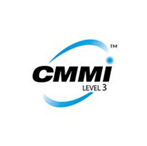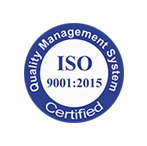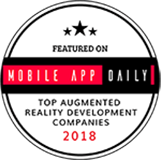The way of perceiving and experiencing the surrounding was completely revolutionized, when Microsoft presented the first ever mixed reality goggle on 2016- the HoloLens. This head-mounted display was first of its kind and enabled the interaction with the real and virtual world.

It opened doors for businesses of multiple verticals to improve their work-related tasks and processed with its high-degree interactivity and absolute immersion.
Even though HoloLens stood at the pinnacle among all other HMD’s, it still posed some serious issues regarding comfort, immersion, the field of view, and connectivity.
To overcome these drawbacks, Microsoft launched a new version of HoloLens on 24th February this year. It comes with built-in technical, functional, and visual features that remove all the problems that are present in the earlier version of HoloLens.
So let’s see how HoloLens 2 is different from its earlier counterpart.
Broader information about HoloLens 2: (a quick study)
A HoloLens is a standalone MR headset. Unlike virtual reality HMD’s, a person using HoloLens will see holograms in the real world. It works all by itself and doesn’t require to be connected with a computer system which makes it a lot easier for the person using it to move and interact with the surrounding while using it.
It tracks the eyes of the users through in-built Kinect sensors, 3D eye positioners, and various inertial measurement units and calculates the pupillary distance of the user’s eyes.
While monitoring the movement of the user’s head it projects digital content on the see-through holographic lenses. The content adjusts with the real world according to the movement of the user wearing the headset.
HoloLens is an amazing device as it merges the holograms with the real world instantly. The interaction that it offers also doesn’t require any external device. It itself tracks the gestures of hands and eyes of the viewer through real-time tracking articulated model that is integrated internally in it.
Positional tracking sensors operate to map the surroundings and gain a clear understanding of the user’s environment. HoloLens is a mini-computer in itself that contains a Qualcomm Snapdragon 850 processor and an AI holographic co-processor. It is integrated with speakers on its side and high performing holographic processing unit. [Source]
HoloLens 2 has preceded the expectations of various critics and has solved various issues that were present in its first version.
- Stabilization and comfort in mounting:
HoloLens 2 is much comfortable than its previous version. To improve the wearing time of the device its weight and size was reduced. Microsoft has incorporated the visor design for its HoloLens 2 so that a person can switch the lens up to come out of the immersion quickly.
The regulating mechanism has been moved at the back of the HMD to make the device balanced and easy to adjust. The center of gravity has shifted behind the ears that make it convenient to use for longer period of times.
HoloLens is developed for everyday enterprise usage. Hence, the device has a removable forehead gasket that holds the sweat of the person using it. This makes it more hygienic and comfortable for everyday usage.
- Field of View:
Even though it is a little smaller and lighter than the first HoloLens but the thing that a person can see from it is way bigger.
The biggest issue with HoloLens 1 was its field of view. People were only able to see the holograms directly in front of them. The projections would vanish if the person moved his head even a little bit. Also, the user could see only a small square where they had to try their best to fit the content.
Microsoft increased the angles of the mirrors that doubled the field of view in HoloLens 2. It makes it much easier for the user to perceive the virtual objects. Also, the objects are now much closer and vibrant then they were in HoloLens 1.
- Interaction with virtual objects:
HoloLens 2 comes subsumed with better gesture manipulation and sensing features that provide better interaction with virtual objects.
Unlike HoloLens 1 that was limited with few gestures, HoloLens 2 allows new hand movements like resizing, scaling, grabbing, dragging, etc.
It is able to recognize the hand gestures and track the eyes of the user so that he/she can scroll the social feeds and sites by looking at the bottom of the page. It now also comes in-built with a voice assistant that enables a person to give directions with voice commands.
CONCLUSION:
HoloLens 2 has definitely solved many problems that were associated with HoloLens 1. However, the product is still targeted for enterprises and is not open to the consumer market.
Even if it would have been available for the general crowd its whopping price of $3500, would have still made it impossible for the majority of people to purchase it.
But still, HoloLens with its exemplary interaction and immersion features will assist companies of various sectors with designing, maintenance, and other enterprise-related operations.
It has opened gated for developers to use their creativity to prepare outstanding applications that a person can access through this marvelous piece of gadget.












